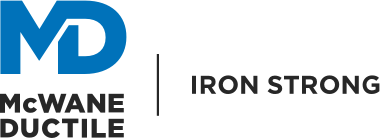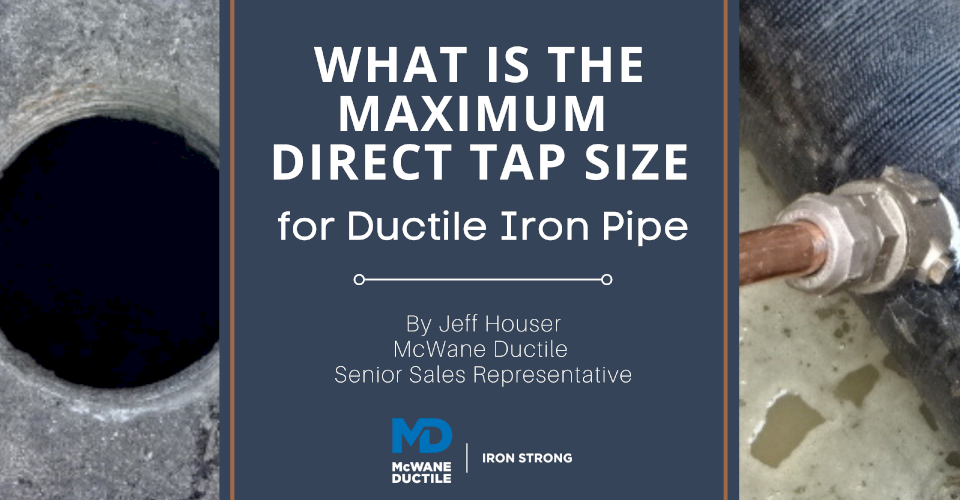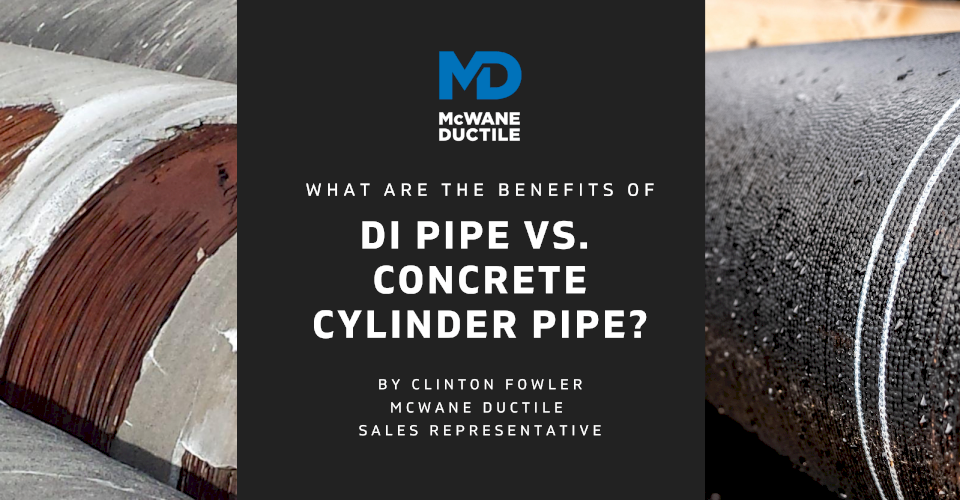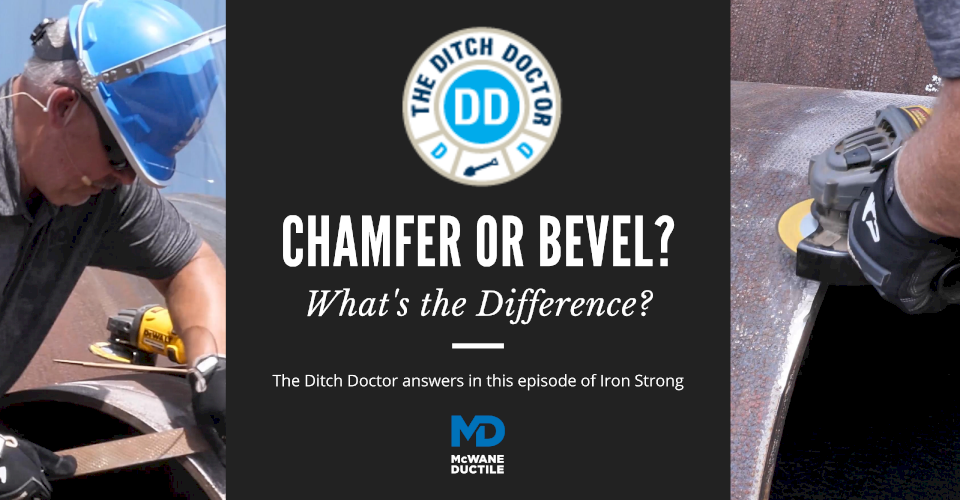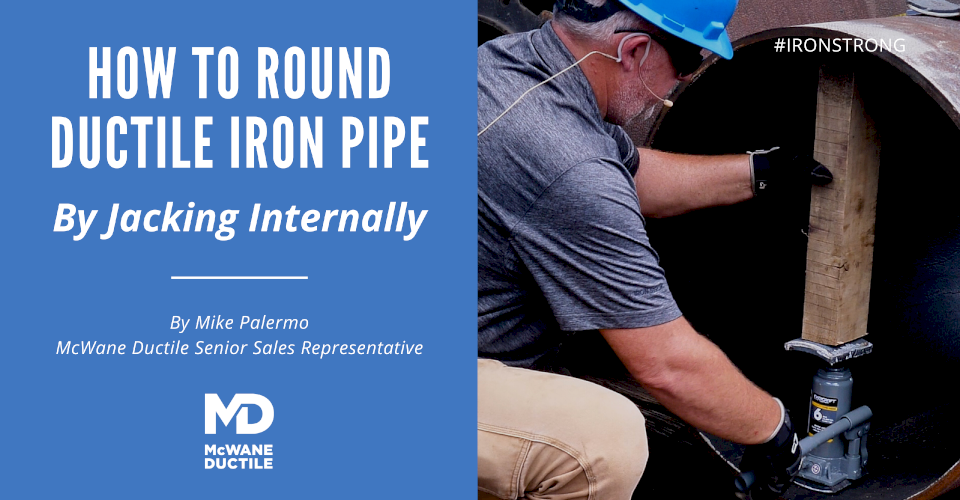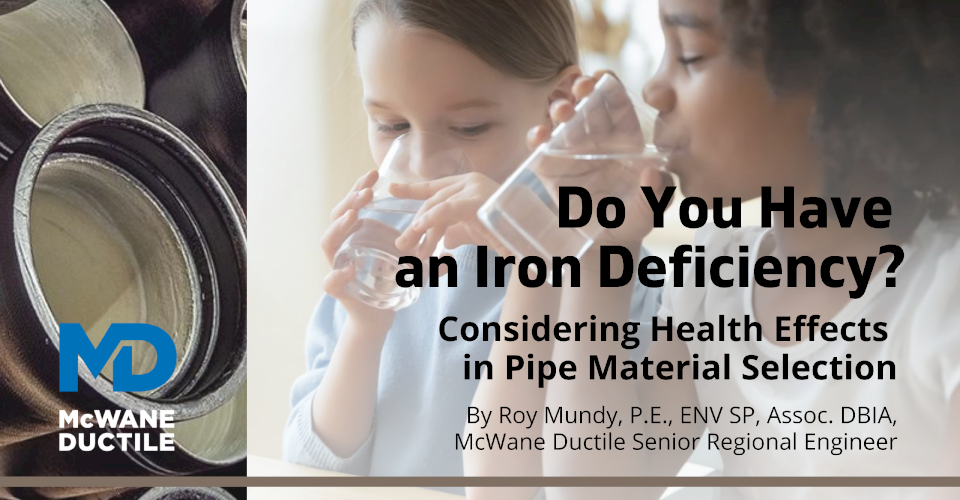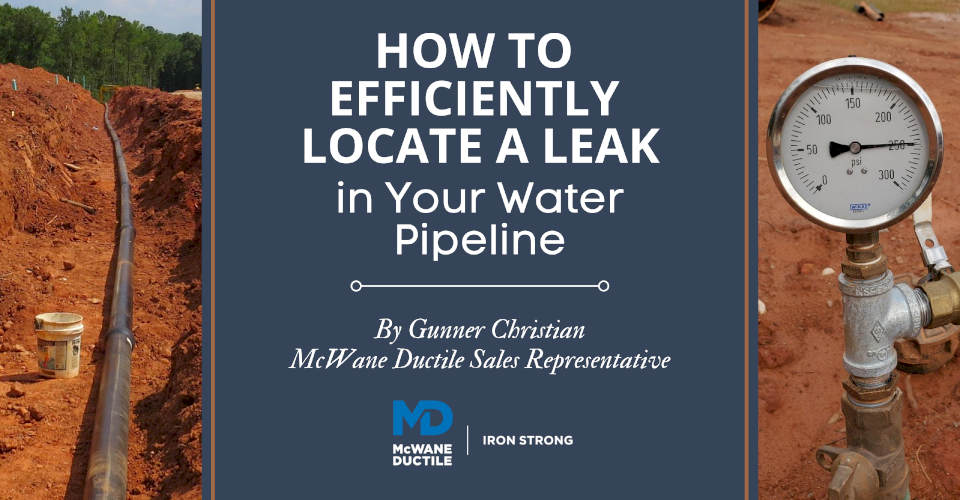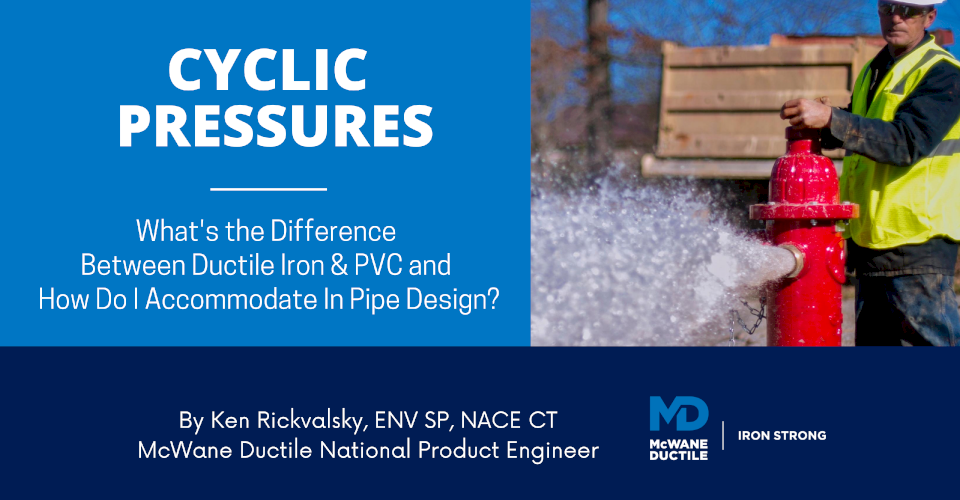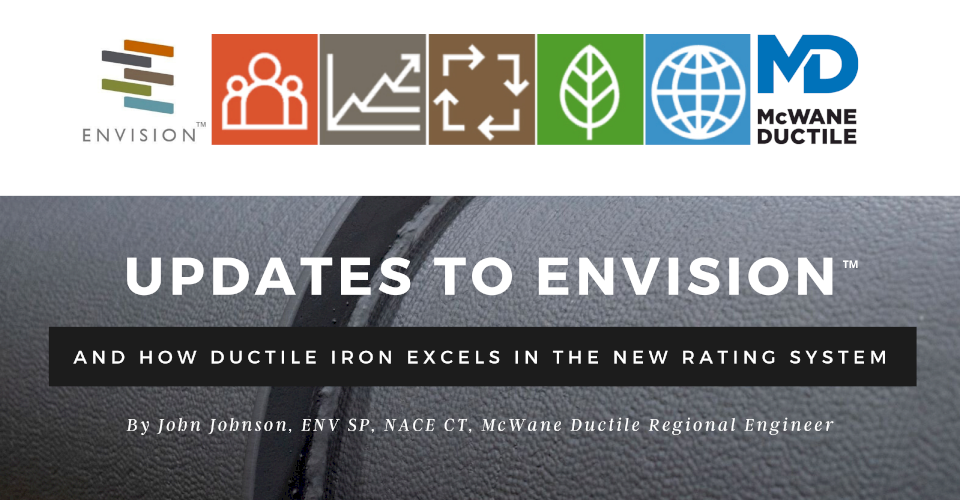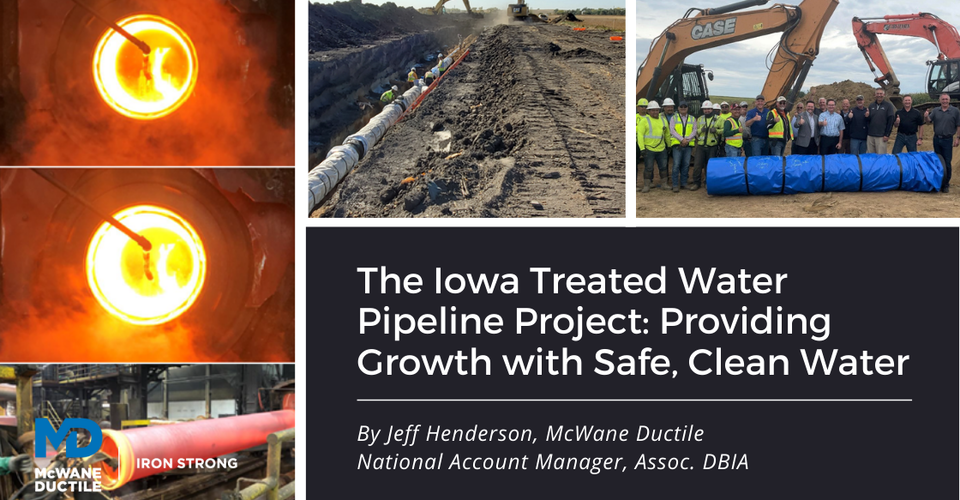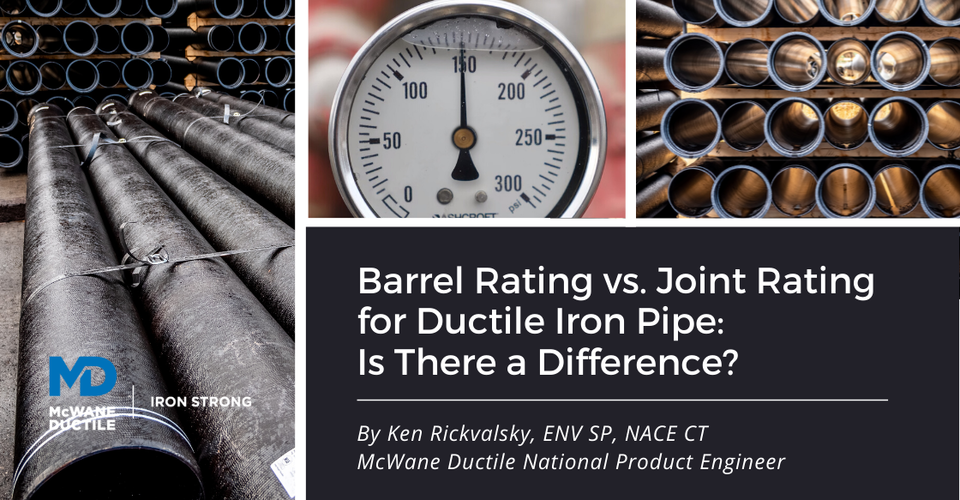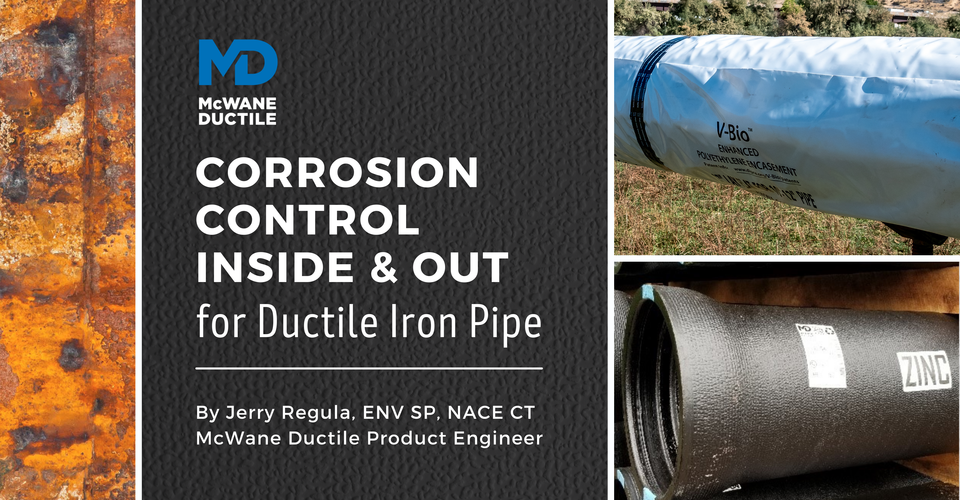-
What is the Maximum Direct Tap Size for Ductile Iron Pipe?
09/10/2020 In Installation TechnicalWith Ductile iron pipe (DI pipe), typical service taps can be installed directly into the wall of the pipe, which is called “direct tapping.” The ability to use direct tapping eliminates the need for tapping saddles. And the ease at which DI pipe can be "hot tapped" helps avoid the issue of unhappy consumers because their service and pressure are not impacted by the addition of a new tap. The waterworks community frequently asks us, “How big of a tap will DI pipe allow?” The simple, most conservative response, not having interrogated the user as to their DI pipeline particulars, would be as follows:
-
What Are The Benefits of DI Pipe vs. Concrete Cylinder Pipe?
09/02/2020 In ProductsPrestressed Concrete Cylinder Pipe (PCCP) has been used in water and wastewater applications for nearly 80 years. The thought process behind PCCP was sound, in that it would combine concrete's high compressive strength with steel's high tensile strength. However, like many products, PCCP has continued to fall short in the following years in many comparative categories to Ductile iron.
-
Chamfer or Beveling Ductile Iron Pipe - What's the Difference
08/26/2020 In Installation TechnicalThere are occasions during field installation of Ductile iron pipe (DI pipe) when a Chamfered edge or a beveled edge may be required. There is typically a sharp edge on any metal pipe after field cutting. This edge is a safety hazard that requires removal. The sharp edge may also damage a gasket during installation, which is an additional reason to remove the sharp edge. Read on to see the differences and why it is essential to have the proper edge on a field-cut DI pipe.
-
How To Round Ductile Iron Pipe By Jacking Internally
08/20/2020 In InstallationOccasionally, Installers in the water industry may experience difficulties when attempting to assemble cut lengths of large diameter pipe. This is sometimes due to ovality issues with the pipe material, especially when installing large-diameter, thin wall pipe. Inexperience with handling the occasional oval pipe can lead to a rather frustrating day. Utilization of proper materials and installation practices can resolve the issues more easily and help to ensure the pipeline will function as intended well beyond the designed expectations.
-
Do You Have an Iron Deficiency? Considering Health Effects in Pipe Material Selection
08/13/2020 In Environmental & Safety ProductsWe in the United States are most fortunate, for the most part, to have access to safe, clean drinking water. Even when traveling, we are not hesitant to draw water from a hotel faucet to brush our teeth or even fill a glass to drink. This privilege is no accident.
-
How to Repair Glass-Lined Ductile Iron Pipe
08/12/2020 In Installation ProductsWhen discussing Ductile iron pipe (DI pipe) in corrosion-resistant applications, glass-lined DI pipe often comes to mind. Glass lining has often been the specified lining for DI pipe in sewer and chemical resistant applications. Common uses for glass-lined pipe are for situations such as a sludge line in a wastewater treatment plant or when harmful chemicals are present in the pipeline. There may be occasions in the field when patching of the glass lining may be necessary.
-
How to Efficiently Locate a Leak in Your Water Pipeline
08/05/2020 In Installation TechnicalIn the field, a contractor can become frustrated when attempting to locate the source of a water leak in a buried pipeline. Having a reasoned plan of resolve will save a lot of time, money, and headaches, along with demonstrating a true level of professionalism to outside observers. In this Iron Strong blog, we will examine the patterns of thought, questions to be answered, and the different assessments used when locating a leak.
-
What Services Does McWane Ductile Offer That Can Enhance Your Bottom-Line?
07/30/2020 In Our Company ServicesWhy is your bottom-line important to us? For more than three decades, I had the privilege to serve within the nation's largest investor-owned water utility. During that time, I clearly saw the advantage of a financially sound utility. Whether it be having the resources to invest in needed facilities, provide a work environment that would attract well-qualified people, or purchase needed supplies and equipment to operate the business effectively. These are just a few advantages of maintaining a strong bottom-line.
-
Cyclic Pressures - What's the Difference Between Ductile Iron & PVC and How Do I Accommodate In Pipe Design?
07/25/2020 In Products TechnicalThis entry in the Iron Strong Blog compares the performance of Ductile iron pipe (DI pipe) to Polyvinyl Chloride (PVC) pipe against cyclic pressure variations in piping systems. Cyclic loading, or more accurately, cyclic surges, is a phenomenon where pressures in a pipeline frequently vary due to changes in demand, operating conditions, storage tank levels, treatment plants, and pump starts and shutdowns. Surges can also occur during common field operations such as exercising or flushing fire hydrants or valves within the system, which can drastically change flow parameters, causing surges or water hammers.
-
Updates to Envision® and How Ductile Iron Excels in The New Rating System
07/23/2020 In Environmental & Safety Installation ProductsThis Blog Reflects Significant Updates for Envision Manual V3. As we know, America's infrastructure is in crisis! According to the American Society of Civil Engineers, the estimated investment needed is $1 Trillion over the next 25 years for underground water infrastructure. This investment, as well as the ever-increasing cost of electricity, limited water supply, ever-decreasing natural resources, and environmental concerns, are driving the need for change. Change on how infrastructure is designed and constructed – utilizing more sustainable design and construction practices. ENVISION is designed to provide guidelines for these changes to North American infrastructure. In short, it is a rating system approach very similar to LEED Building Certification; however, with the focus on infrastructure.
Envision not only asks, ‘Are we doing the project right?’ but also, ‘Are we doing the right project?’
Latest Posts
- The Iowa Treated Water Pipeline Project: Providing Growth with Safe, Clean Water 11/09/2021 In Installation Services
- Hydrotesting on Slopes: The Hills Have PSI! 10/28/2021 In Installation Technical
- Barrel Rating vs. Joint Rating for Ductile Iron Pipe: Is There a Difference? 10/15/2021 In Technical
- Corrosion Control - Inside and Out - for Ductile Iron Pipe 10/08/2021 In Products Technical
